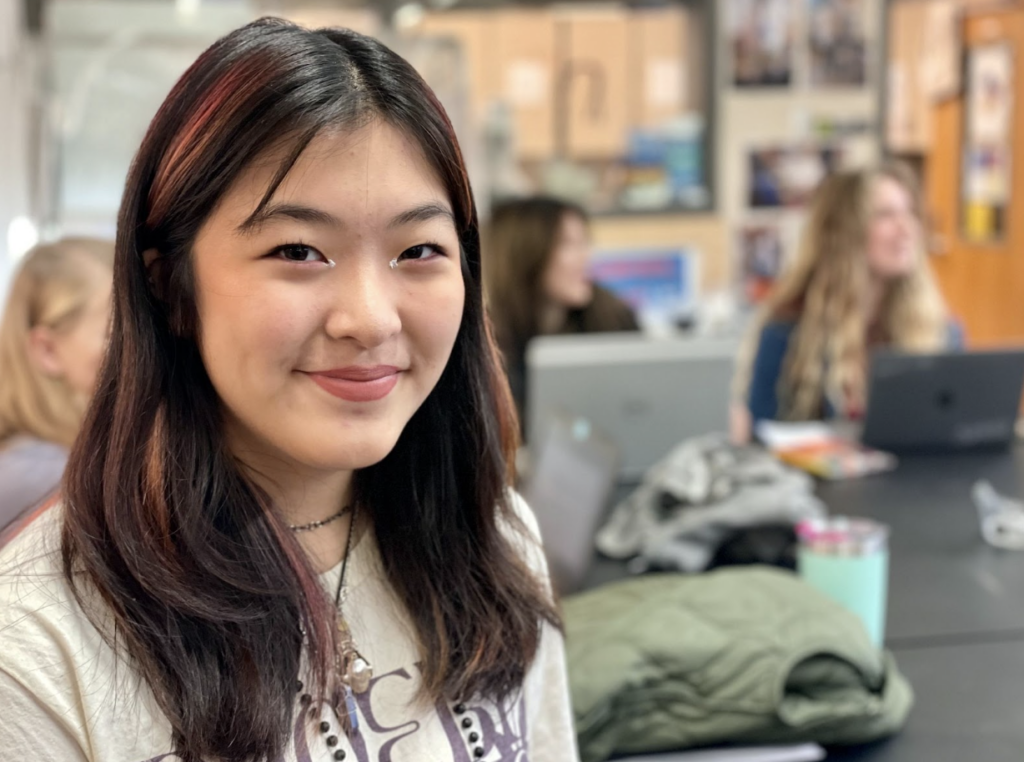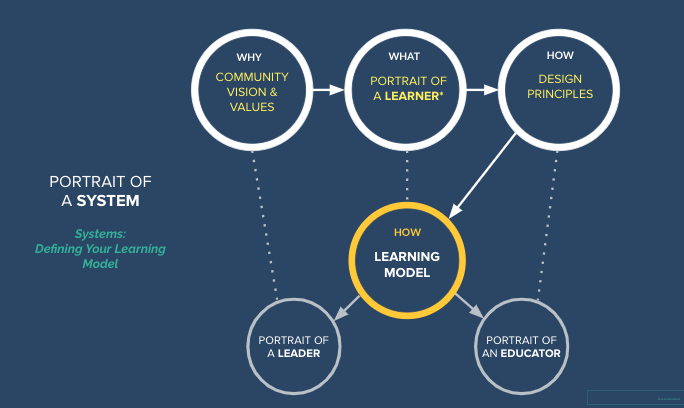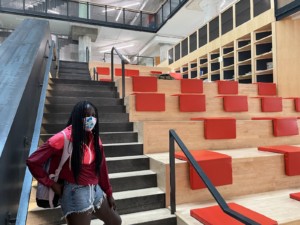Charting a Course for Educational Transformation: The Power of Aligned Portraits
Key Points
-
It is not enough to simply create a Portrait of a Learner. One must then apply this transformation to the whole system.
-
Collective vision not only defines the essential knowledge, skills, and mindsets desired for students upon graduation but also reignites engagement and enthusiasm among students, teachers, administrators, and community stakeholders.

Facilitating a transformative journey starts with a comprehensive visioning and strategic process that revolves around four interconnected and dynamic portraits: the Portrait of a Learner, the Portrait of a System, the Portrait of an Educator and the Portrait of a Leader. These adaptable frameworks exhibit interconnections tailored to the specific context of each role. For example, an educator is expected to demonstrate collaborative skills, but the expectations for this quality may diverge within the broader educational organization.
The Portrait of a Graduate is a unique and locally tailored vision that outlines the competencies and transferable skills that support a learner’s long-term success. It serves as the guiding North Star for systemic transformation. This collective vision not only defines the essential knowledge, skills, and mindsets desired for students upon graduation but also rekindles engagement and enthusiasm among students, teachers, administrators, and community stakeholders. It provides strategic direction for a thorough redesign of the overall educational experience, ensuring the growth, adaptability, and ultimate success of every learner in our ever-evolving world.
Simultaneously, the Portrait of a System elevates this vision beyond aspiration, underscoring the need for a deliberate focus and alignment throughout the entire school district. Collaborating closely with dedicated district leaders cultivates a strategic shift by establishing new conditions, processes, and practices that promote equitable and enduring 21st-century experiences for both educators and students alike. This alignment ensures seamless integration of the vision at every level of the educational ecosystem, fostering a cohesive and purposeful transformation. Districts and schools support these with codesigned learning models, curriculum frameworks, and instructional models.
At the core of this transformative process lies the Portrait of an Educator, recognizing that educators’ competence and dedication can shape the overall learning experience for every student. By purposefully integrating rigorous academic content with 21st-century skills, mindsets, and literacies, educators play a pivotal role in bringing the vision to life. The Portrait of an Educator framework guides the identification and design of essential tools, resources, and support systems, empowering educators to effectively deliver on the district’s new vision with passion and proficiency. Leadership within this systemic design requires more than traditional management traits.
The Portrait of a Leader describes the optimal competencies required by leaders (both at the governance and administrative levels) to support educators in implementing the learning model and helping every student achieve the Portrait of a Graduate.
This nested approach paves the way for a truly transformative path that upholds the hopes and dreams of a community. It nurtures a generation of students equipped with the essential skills and mindsets to thrive in a dynamic, ever-changing world. The intentional system-wide shift fosters an inclusive, forward-thinking, and learner-centered education, empowering students to become future-ready leaders and active contributors to a flourishing society.

Step 1: Engage with the Broader Community
As school system leaders, there is a responsibility to nurture the education and well-being of every child. To prepare students as lifelong learners and contributors, it’s critical to begin by engaging with the broader community to identify shared aspirations and address essential questions:
- What are the hopes, dreams, and aspirations of our community for its young people?
- In the face of a rapidly changing, complex world, what specific skills and mindsets do our children need to succeed?
- How can we design equitable learning experiences within our school systems, considering all relevant factors?
Step 2: Define the Portrait of a Graduate
Uniquely tailored to each district yet globally relevant, the Portrait of a Graduate acts as the guiding North Star for systemic transformation. This collective vision defines the knowledge, skills, and mindsets desired for students upon graduation, reinvigorating and re-engaging students, teachers, administrators, and community stakeholders. It provides strategic direction for redesigning the overall educational experience, ensuring every student’s growth and success.
Step 3: Align the System with the Portrait of a Graduate
Beyond merely an inspiring vision, a school district must intentionally focus on shifting and aligning the entire system to make the Portrait of a Graduate a tangible reality. Districts must work alongside dedicated school district leaders to facilitate a strategic shift, establishing new conditions, processes, and practices that foster equitable and enduring 21st-century experiences for both educators and students. This alignment ensures the vision’s seamless integration throughout all levels of the system.
Step 4: Empower Educators with the Portrait of a Educator
At the heart of this transformative journey lies the overall learning experience provided to every student. By purposefully integrating rigorous academic content with 21st-century skills, mindsets, and literacies, educators play a vital role in bringing the vision to life. The Portrait of an Educator framework guides the identification and design of essential tools, resources, and support to empower educators to deliver on the district’s new vision effectively.

Step 5: Equip Leaders with the Portrait of a Leader
A Portrait of a Leader serves as a blueprint, outlining the essential competencies and qualities necessary for leaders across different levels of the educational ecosystem. Beyond establishing clear expectations, this portrait offers guidance for navigating of the complex landscape of modern education. In this context, leadership goes beyond conventional management traits. The Portrait of a Leader empowers educational leaders to effectively inspire, guide and empower their teams, fostering a culture of innovation, adaptability, and continuous improvement. It equips leaders to champion and steer the roadmap for systemic change, ultimately leading to more equitable, learner-centered, and forward thinking educational environments.
Review, Refine, and Celebrate
As we collaborate with system leaders to align their aspirations with daily practices, it can be overwhelming to consider the multitude of shifts required. To continue growing and evolving, it is crucial to acknowledge what is working and build from there. Celebrate progress, growth, and successes within your team and beyond. Recognize systems and teachers who are open to sharing their practices, receiving feedback, and collaborating. This commitment is how networks are formed, allowing us all to learn and grow together. Embrace the transformation, continue learning, and celebrate each step of the journey as you create and implement a Graduate Learning Profile that enriches the lives of your students and prepares them for a thriving future.







0 Comments
Leave a Comment
Your email address will not be published. All fields are required.